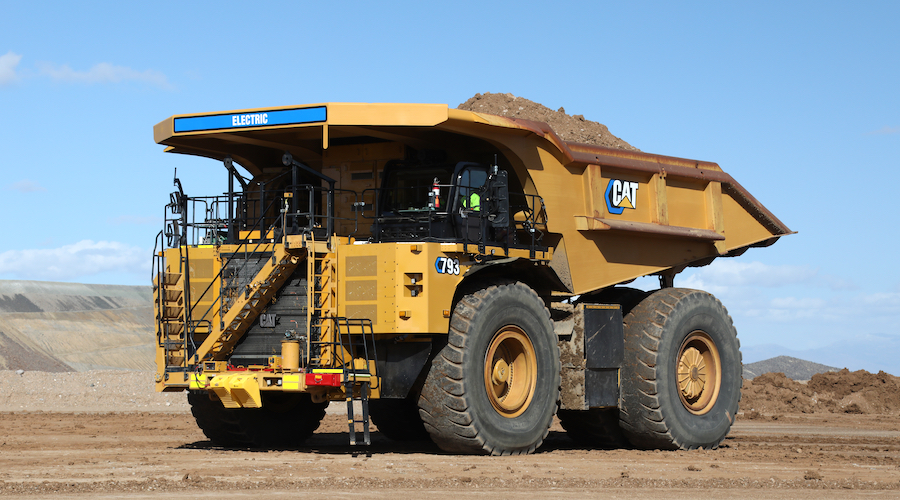Three ways IDTechEx will revolutionize mining vehicles


IDTechEx forecasts that the electric mining vehicle industry will be valued at nearly US$23 billion by 2044. The company’s report, Electric Vehicles in Mining 2024-2044: Technologies, Players, and Forecasts, highlights the role of large electric vehicle (EV) batteries and innovative fast charging methods in driving the adoption of electric mining vehicles, as well as the rise of autonomous mining vehicles.
Many see electrification as the future of mining vehicles, as it can achieve meaningful emissions reductions for the mining industry while also being cheaper, safer, and more productive for mines to operate. However, before these benefits can be realized, the enabling technologies surrounding EVs must be developed to a point where adopting one is as painless as possible. Building out battery and charging technology will be crucial in the industry's electric transition.
Hydrogen fuel cells will likely be a part of the decarbonization solution in mining vehicles, but IDTechEx expects battery-electric to be the predominant way forward. The battery technology within an electric mining vehicle will be critical in determining its performance, including its endurance, lifetime, productivity, and more.
IDTechEx's analysis shows that most mining EVs (just under 80%) use lithium-iron-phosphate (LFP) technology, and this is due to the specific priorities of the vehicles. LFP tends to have lower energy densities than lithium-nickel-manganese-cobalt oxide (NMC), but this is not a major concern for mining vehicles.
Where LFP does win out is in its cycle life. Minimizing the frequency of replacements by using a longer-life battery pack is an effective way to make EVs more economical. LFP cells are generally considered less likely to burst into fire, thus limiting the risk posed to mine workers.
Looking beyond NMC and LFP, IDTechEx expects more battery technologies such as LTO and Na-ion to continue developing and eventually see viability for mining vehicles.
The challenge of vehicle charging is one of the central barriers to the adoption of mining EVs. Where mines are used to the fast refueling of vehicles in 10 to 20 minutes, charging usually takes multiple hours of downtime and hinders the productivity.
OEMs are now looking to employ methods including multi-gun cable charging and megawatt charging systems to bring times down to between 20 and 60 minutes. This goes some way to increasing the productivity of vehicles, but charging at such high rates can accelerate the degradation of batteries and increase the frequency of battery replacements.
Battery swapping is an alternative to cable-based charging, which has seen a lot of interest from mining OEMs, particularly for underground vehicles. Swapping is done in dedicated stations using a crane or hoist in as little as 5 to 10 minutes – making it even faster than even conventional diesel refueling.
Dynamic charging also plays a role in mining. Vehicles can be charged in-cycle using power rails or overhead catenary lines along major pathways. This has the potential to completely eliminate charging downtime and maximize productivity, but it is still being developed and has seen the least use.
All of the above charging methods are likely to play a part in driving the electrification of the industry, with different methods to be used for different vehicles depending on their technical requirements and duty cycle demands.
The mining industry has historically been labour-intensive and posed a great risk to worker safety. The automation of vehicles is one way for operators to minimize the human cost of mining and improve overall safety. The mining industry is particularly well-suited to automation too. Most vehicles travel along the same general routes with few intersections and limited external traffic.
It is for these reasons that autonomous mining vehicles first entered the market as early as the 1990s (far before electric mining vehicles), with Caterpillar introducing them as an additional service for their haul trucks. The use of these grew steadily until the late 2010s before seeing an adoption boom in the last five years – jumping from around 500 autonomous mining vehicles worldwide to over 1,000 in this timespan.
Autonomous vehicles use an array of sensors, including cameras, radar, and LiDAR of different wavelengths, in order to function in all light and weather conditions. Perception algorithms help detect hazards in a vehicle's path and minimize the impact of dust and humidity. Finally, the establishment of robust 5G networks onsite enables communication between vehicles and further improves safety.
The new IDTechEx report "Electric Vehicles in Mining 2024-2044: Technologies, Players, and Forecasts" provides more analysis of the technologies that will revolutionize the mining industry, financial analysis of mining EVs, and case studies of key players across the EV supply chain.
To find out more about this IDTechEx report, including downloadable sample pages, please visit www.IDTechEx.com/EVMining.
Comments